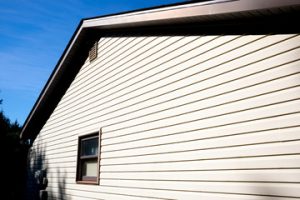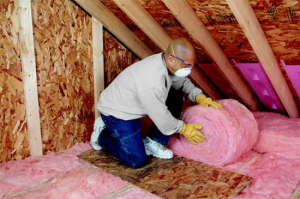Siding is the exterior cladding that protects a building from harsh weather conditions, locks in heat and coolness, and adds design flair. However, choosing the right siding requires balancing environmental concerns, budget constraints and aesthetic preferences.
The most popular options include vinyl, wood, and fiber cement. Each type of siding offers distinct pros and cons. Contact Charleston Siding Pros for professional help.
Durability

Siding should be able to withstand a variety of environmental factors and physical stresses without damage. This is especially important for homeowners who live in areas with harsh climates, where weather can have a significant impact on the lifespan of siding. Choosing a material that is durable and partnering with a company that offers transparent practices and expert advice can help homeowners make an informed decision that aligns with their values and future-proofs their home.
There are a variety of different types of siding on the market, each with its own unique benefits. For example, engineered wood siding like LP SmartSide uses innovative engineered wood strand technology to offer superior durability. It is also treated with zinc borate to provide protection from moisture and fungal decay. Other durable options include vinyl, fiber cement, and stucco.
Regardless of the type of siding chosen, regular inspection and maintenance is essential to maintaining its resiliency. Inspecting for cracks or chipped paint is a simple step that can protect siding from moisture damage and other types of wear and tear. It is also important to periodically apply a water repellent coating to prevent moisture buildup that can lead to rot and other issues.
For siding that has been painted, re-painting can be a quick and easy way to update the look of a house. However, it is essential that the right type of paint is used for exterior conditions to reduce moisture damage and mildew growth. Water-resistant acrylic paints are typically recommended for use with siding.
Regional climates present specific durability challenges for each type of siding. For example, a homeowner living in a high-elevation area may face issues related to intense sunlight, dry air, and rapid temperature changes. Some siding manufacturers, such as Mastic, have developed products specifically for these climates to address these challenges. One such product is Mastic Western Extreme with InfraBlock Technology, which reflects damaging UV rays, resists heat buildup, and locks in warmth to stand up to windy conditions.
Brick veneer is a very durable option for homes, often lasting over a century with proper maintenance. It is unaffected by rain, snow, heat, cold, or impact, and is flame retardant, insect-resistant, and naturally insulating.
Aesthetics
Siding protects and enhances the structure of your home, but it also contributes to its aesthetics. With a wide range of textures, colors and styles, there are endless options to capture your ideal look and feel. From the rustic charm of cedar shakes to the modern sophistication of metal siding, there is a material and design to suit every taste. In addition, advancements in the durability of siding have allowed options once prone to fading and chalking to retain their allure for much longer.
Aesthetics is a broad field that studies the nature of beauty, encompassing everything from symphonies and paintings to the streaked colors appearing in the clear sky at sunrise. It attends to all objects of awareness, focusing on those that please the senses and draw us toward what is true and good. Although traditional objective standards of beauty have been replaced by a more free choice, the study continues to develop in scope and depth.
In the past, many homeowners favored wood siding because of its timeless beauty. However, the constant need for maintenance has prompted many to upgrade to vinyl, fiber cement or metal siding. Vinyl provides a sleek, contemporary look and offers the versatility of color to match any architectural style. It is also moisture and insect resistant, so it requires less upkeep than other types of siding.
Wood is still a popular option for those who prefer the classic charm of shingles or the organic texture of cedar shakes. It is an enduring material with undeniable curb appeal, and can be stained or painted to create any desired look. Wood siding will need periodic maintenance, but it can last 20-40 years with proper care.
Another way to elevate your siding’s aesthetic is to add colorful trim accents. Whether you choose to go with matching hues for a cohesive look or experiment with contrasting shades for an eclectic feel, adding color to your window frames, door casings and other architectural features will instantly brighten your facade and increase your home’s visual appeal.
Energy Efficiency
When installed properly, siding shields your home from various elements like wind, rain, and extreme temperatures, protecting the structural integrity of your house over time. But it also plays a crucial role in enhancing your energy efficiency. By adding an extra layer of insulation, the right siding keeps heat inside during winter and outside in summer, reducing the strain on your heating and cooling system and lowering your utility bills as a result.
Different types of siding have varying insulative qualities, so when it comes to choosing the right one for your home, it is important to keep in mind energy efficiency as well as aesthetics. Some of the most popular options for siding include vinyl, fiber cement, and wood. Vinyl, wood, and fiber cement offer superior insulative properties compared to other materials. They are also durable, affordable, and resistant to moisture. Additionally, they come in a variety of colors and styles to suit your personal style.
However, it is essential to note that the insulating capabilities of any siding material depend on its R-value, or resistance to heat transfer. For example, a vinyl siding with an R-value of more than 20 prevents unwanted heat loss and helps save on your energy costs. The insulating value of wood and fiber cement is similar, although they do not offer as high an R-value as other alternatives.
When it comes to energy efficiency, proper maintenance is key for long-term savings. Checking your siding regularly for signs of damage, removing debris from the house, and cleaning it on a regular basis will help ensure that you get the maximum insulating benefits of your new siding.
In addition to reducing your energy bills, energy efficient siding also protects the environment by minimizing greenhouse gas emissions from power plants. In the long run, this can lead to a reduction in overall energy demand, further contributing to sustainable development. While a new exterior is an investment, the long-term energy savings and increased property value can help offset the initial cost. Besides, there are also various financing options available for energy-efficient improvements, including loans and rebates.
Low Maintenance
If a siding material is labeled low maintenance, that typically means it requires minimal upkeep and care to keep it looking great. However, it’s important to be aware that all cladding materials require some amount of regular cleaning and care to maintain their durability, aesthetic appeal, and functionality.
When determining whether a particular cladding material is low maintenance, you should consider how the product handles moisture. Moisture can be one of the most destructive factors for a home’s exterior, so it is vital to ensure that any material selected can resist water, heat, cold, and humidity without warping or degrading.
The best way to minimize moisture damage is by ensuring that all caulked seams and tiny openings are properly sealed and regularly inspected and re-sealed as needed. This will prevent moisture from infiltrating the cladding layer, which can cause mold and mildew, delamination, and rot.
Another important aspect of maintaining a low-maintenance home exterior is to keep the surrounding landscape trimmed and tamed. Bushes and other shrubbery should be trimmed to ensure that they are not scraping against or touching the siding, which can create friction and transfer moisture to the structure. Additionally, you should ensure that all sprinklers are positioned at least 6 inches away from the house to avoid spraying moisture directly onto the siding.
For vinyl siding, cleaning it with a garden hose every six to 12 months is a great way to remove dirt, dust, and pollen that can build up on the surface. You can also use a phosphate-free cleaner, such as the TSP that GNH Lumber carries, to scrub stubborn dirt spots. Just be sure to test the cleaning solution on a small, inconspicuous area before applying it to the entire surface of your siding to make sure it won’t damage or discolor it.
For aluminum siding, a basic cleaning once or twice a year is typically sufficient. This can be done using a mixture of water and vinegar, which should be applied to the surface and left to sit for a few minutes before scrubbing it with a soft brush or sponge. For more persistent stains, you can try a commercial product such as pressure washer or a solvent-based cleaner. Be sure to wear the appropriate safety gear when working on your siding and always work on a stable surface. Additionally, be sure to work in a well-ventilated area to prevent breathing in any chemicals or particles that could be harmful.



